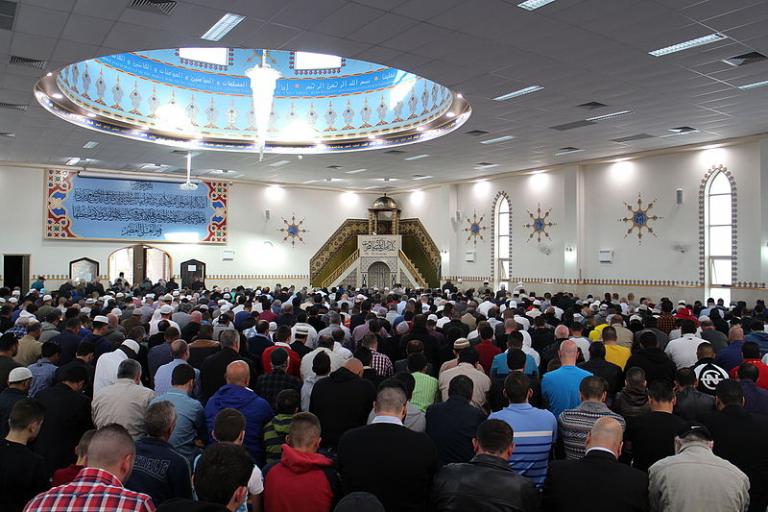
One of the more striking experiences that I had during my last trip to Australia prior to this one was a visit to the Lakemba Mosque (aka the Masjid Ali Bin Abi Talib), in the Sydney suburb of Lakemba.
I was taken there by the late Elder Paul Sybrowsky (1944-2014) of the Seventy, who, based in Sydney, was serving at the time as the Australia area president for the Church. I’m guessing that this was somewhere around 2010 or so. Maybe a bit before that.
The point of the visit was to meet with Taj El-Din Hilaly (تاج الدين الهلالي), who had been and maybe still was at the time the imam of that Sunni mosque and who, by appointment of the Australian Federation of Islamic Councils, had been serving as the mufti of Australia since 1988. (He apparently liked to refer to himself as the Grand Mufti of Australia and New Zealand, although not everybody — not even all Sunni Muslims — recognized him as holding such a position.)
A mufti, of course, is a qualified scholar of Islamic law who is authorized to give advisory legal opinions — non-binding, non-government enforced rulings — in response to questions from believers. (For a fuller explanation, see “What a fatwa is and is not.”)
The visit went well enough, but I came away with quite a negative impression. Imam Hilaly had, by that point, been in Australia for the better part of three decades, but my sense was that he would have found it exceedingly difficult to carry on a prolonged conversation in English or to read an Australian newspaper. The area immediately surrounding the mosque looked to me then like a bit of the Middle East, transported to Australia and plopped down into suburban Sydney. Everything around it looked and felt Arabic, and all of the signage around it was in Arabic. And yet, in his roles as imam and as mufti, one of Hilaly’s major responsibilities was surely to advise Muslims living in Australia — many of whom aren’t even of Arab extraction — how to negotiate life in this country as faithful practitioners of Islam. But he himself could scarcely be said really to be in Australia at all, other than geographically.
While I was still in Australia on that visit, but after my time with Imam Hilaly, I read a report in one of the Australian newspapers of a Sydney lecture by the imam and Islamic chaplain attached to the campus of Georgetown University, in Washington DC. It was, he said, absurd for Muslims living outside of the Middle East to have an imam or a mufti who couldn’t even speak the local language. He named no names, but it was pretty obvious whom he had in mind.
Even a quick scan of the Wikipedia article about Taj El-Din Hilaly is enough to give at least some sense of the endless controversies in which he was constantly embroiled while serving as mufti. Muslims living in places like Australia deserve and certainly need much better than that. So I’m quite happy to see efforts such as that of Zaytuna College, in Berkeley, California, which is trying to raise up a cadre of well-informed American Islamic scholars and leaders who are both fully Muslim and fully Western. I know relatively little in detail about Zaytuna, but I applaud the idea in principle and I hope that it succeeds.
Posted from Sydney, New South Wales, Australia










